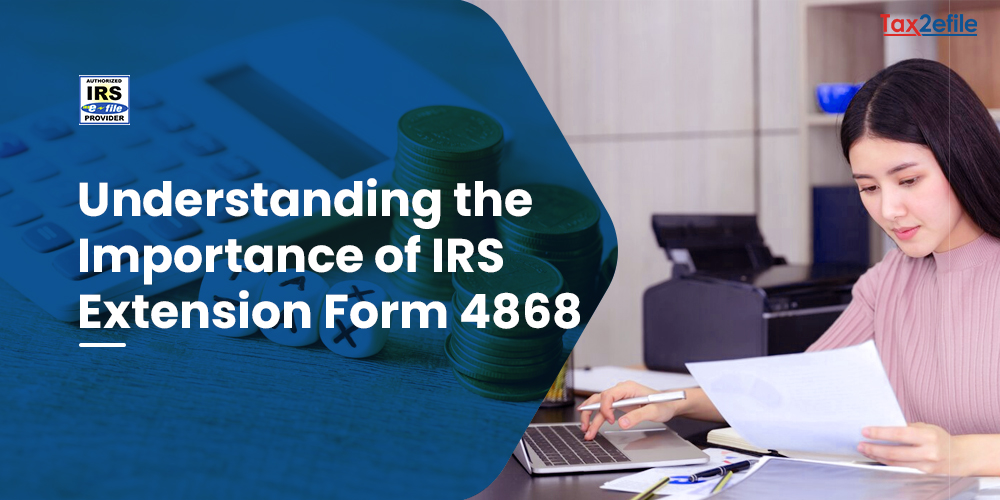- March 24, 2014

Form 4868 looks simple but a complex one that makes you perplexed. The purpose of form 4868 is to apply for 6 more months of automatic extension of time to file tax returns but not tax dues. Those who file Form 1040, 1040A, 1040EZ, 1040NR, 1040NR-EZ, 1040-PR, or 1040-SS must file 4868 in order to get this automatic extension time 6 more months for filing returns on or before October 15th, 2014 while one should pay dues as per the reported individual tax amount figures as shown in the form 4868 in 7th line against the ‘Amount you are paying’, e-file this form 4868 with the tax amount payable with any of the IRS certified service provider website on or before April 15th, 2014.
IRS caution
Although you are not required to make a payment of the tax you estimate as due, Form 4868 does not extend the time to pay taxes. If you do not pay the amount due by the regular due date, you will owe interest. You may also be charged penalties.
Any remittance you make with your application for an extension will be treated as a payment of tax.
You do not have to explain why you are asking for the extension. We will contact you only if your request is denied.
Do not file Form 4868 if you want the IRS to figure out your tax or you are under a court order to file your return by the regular due date.
IRS generally will allow only 6 months from April 15th, 2014 that is in a calendar year October 15th, 2014. However, there may be an exception if you are living out of the country. See Pub. 54 for more information. You can e-file tax returns through IRS certified service provider before the expiry of the extension dates.IRS reminds you not to attach Form 4868 with your tax returns.
As we deal with form 4868, we find paying the tax amount due by April 15th in a calendar year would be different from the tax amount payable to be shown when during the filing returns especially for those who seek automatic extension time say 2 months in case of “out of country” US citizens or residents, so interest will be charged for the difference in tax amount payable even if one gives the reasonable cause.
0.5% is charged on any tax not paid by 15th April, it cascades month wise amounting to a maximum of 25% penalty. If one can attach reasonable cause along with file returns the late payment penalty may not be charged. you may qualify for this consideration in case if you have covered paying 90% of your actual 2013 tax liability on or before the due date of your return through withholding, estimated tax payments, or payments made with Form 4868.
Filing your tax returns after the due date in the normal course or after the sought automatic extension time through form 4868, IRS would charge you a late filing penalty.
The penalty is usually 5% of the amount due for each month or part of a month your return is late. The maximum penalty is 25%. If your return is more than 60 days late, the minimum penalty is $135 or the balance of the tax due on your return, whichever is smaller. Penalty may be removed in case of submission of reasonable cause for late filing along with tax returns. Form 4868 should not be attached to tax returns.
IRS considers and allows a way to claim credit for payments made with form 4868 and as per their statement follows-
When you file your 2013 return, include the amount of any payment you made with Form 4868 on the appropriate line of your tax return.
The instructions for the following line of your tax return will tell you how to report the payment.
• Form 1040, line 68.
• Form 1040A, line 41.
• Form 1040EZ, line 9.
• Form 1040NR, line 64.
• Form 1040NR-EZ, line 21.
• Form 1040-PR, line 11.
• Form 1040-SS, line 11.
If you and your spouse each filed a separate Form 4868 but later file a joint return for 2013, enter the total paid with both Forms 4868 on the appropriate line of your joint return.
This is the IRS’s way of pronouncing rules, considering, qualifying, and quantifying requirements, contribution, and for the cause of the nation.
E-file your form 4868 with your IRS-certified partner and service provider Tax2efile.


